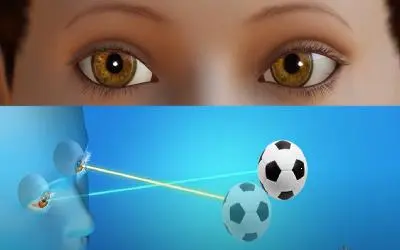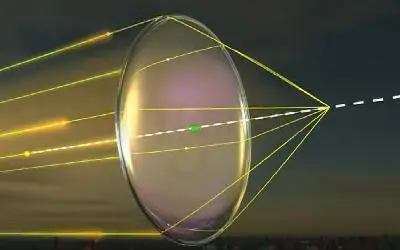Symptoms of BVD
- Pain symptoms: Headache, sinus, and eye pain.
- Head tilt: May cause neck ache and back pain. Long terms of head tilt can lead to unilateral furrowed brow asymmetrical face
- Vestibular symptoms: Dizziness, imbalance, motion sickness, poor depth perception, lack of coordination, pulling to one side when walking
- Reading symptoms: Tired easily and difficult to pay attention when reading, skip lines and lose one’s place easily, words running together
- Routine visual symptoms: Eye tiredness, nighttime blindness, blurry vision, the difficulty for near tasks
- Binocular vision symptoms: Double vision, use one eye when reading, light sensitivity
- Physiological symptoms: Anxiety easily in a crowded place or in a large space
What’s the next step?
Having 20/20 vision means you can see a specific letter on an eye chart as well as most people can from 20 feet away. But healthy vision involves more than just this measurement.
For kids (6 to 18 years), it’s a advisable to get a thorough eye check before starting school and every year after. This check looks at the health of both the outside and inside of the eyes, color vision, glasses prescription, and checks how well the eyes work together. If a child struggles with reading, learning, or reaching their potential, a special vision evaluation Neuro-Developmental Vision Evaluation is needed.
Toddlers to 5 years old kids who have an eye turn (Strabismus) or lazy eye (Amblyopia), adults with trouble reading or had a head injury and kids with Autism Spectrum or facing other developmental delays, a Neuro-Developmental Vision Evaluation is highly recommended.
Our evaluation goes beyond just checking if you have 20/20 vision. We look at all the important visual skills needed for reading and learning.
Eye Teaming Skills
- Your two eyes work well together? They need to aim, move, and team up. If they don’t coordinate properly, it can cause problems like converge insufficiency difficulty in depth perception.
Eye Focusing Skills
- The eyes stay clear at different distances? Quick and automatic eye focus adjustment is crucial for activities like learning, reading, writing, and sports. Problems in eye focus adjustment can lead to tired eyes, lower reading comprehension, and avoiding close work or other activities.
Eye Movement Skills
- Do the eyes show enough muscle control, tracking, fixation, etc.? In school, regular eye movements help the eyes move quickly and precisely along a line of text or from a book to a desk to the board, and so on. In sports, good eye movements help the eyes and hands work together, react quickly to what’s seen, and track things accurately.
WHAT IS A NEURO-DEVELOPMENTAL VISION EVALUATION?
Neuro-Developmental Vision Evaluation (NDVE) is more detailed than a regular eye check. It lasts about 1 to 2 hours and is done by our vision specialist and therapist, working one-on-one with the patient. The goal is to understand how the visual system handles information, how vision works with other senses, and whether vision is helping or hindering performance. Parents wait in the reception area during the test. Afterward, the scores are calculated and discussed in a separate meeting with our Behavioral and Developmental Optometrist, the patient, and/or the parents. We’ll talk about treatment options at this consultation.
Sometimes, if the issues are complex, the evaluation might take longer. If that happens, our vision specialist will explain everything to you at that time.





